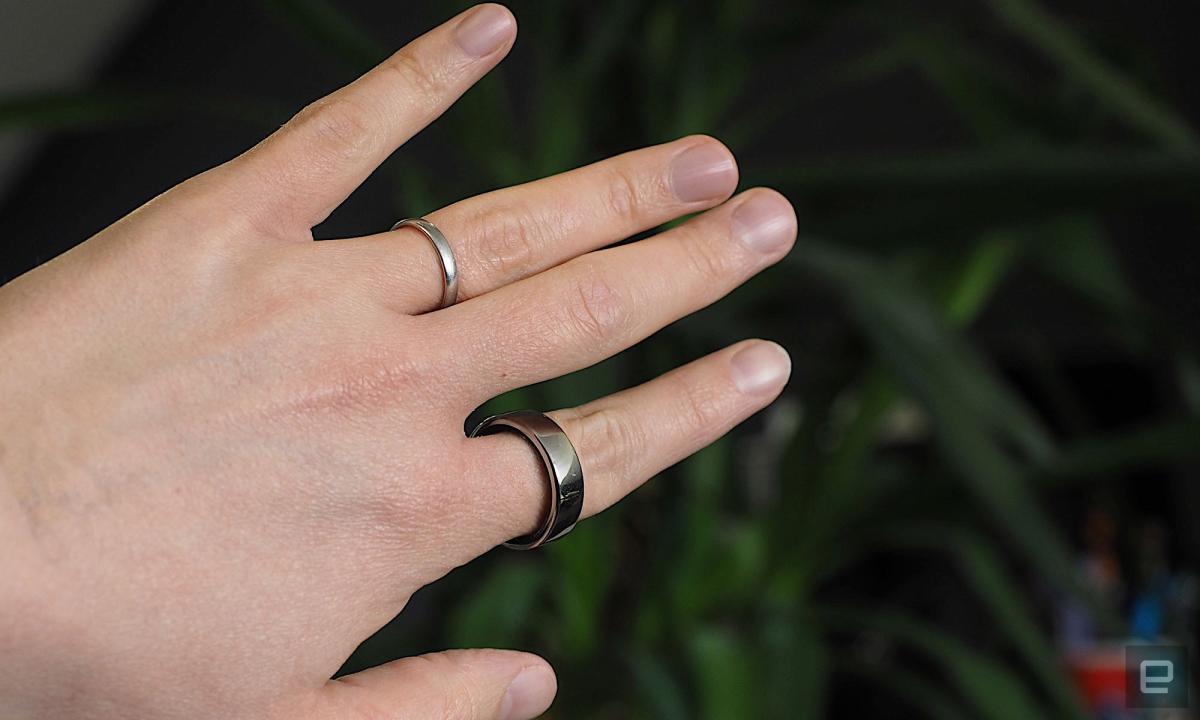Sometimes you’re lying in bed and the glow of your smart ring’s optical heart rate sensor creeps into your peripheral vision. I’ve been thinking about how Samsung (and possibly Apple) will enter the smart ring market and why that’s a terrible idea. You see, these companies want devices that make their presence felt in your life and integrate into your routine. But smart rings deliberately fade into the background, which limits the possibilities and possibilities that people want to have with them.
Back in February, Samsung announced the Galaxy Ring, a wearable health monitoring device built into a ring. When it launches later this year, it will continuously monitor your sleep, breathing, exercise and reproductive cycle. Quite by chance, I’m sure Bloomberg reported that Apple was also conducting research into its own smart ring platform. Both companies are not-so-secretly pursuing the Oura Ring, the market leader in finger-worn wearables. And I have been testing one of them for a long time.
Oura tracks your sleep, temperature, activity, exercise recovery, and menstrual cycle. It’s a marvel of engineering to pack so much technology into such a small and elegant package. The downside, if you can call it that, is that there is no way to access the data collected by the ring or its insights unless you have a phone handy.
But here’s the thing: It’s not that often that I actually open the app to see what the stats say. When I wake up feeling crappy, there’s usually an obvious reason why it doesn’t need any further explanation. And on the rare occasions that I wake up and don’t know why I’m feeling unwell, the last thing on my mind is to look at my phone. Who wants to look at fine-grained data when your head is racing and your eyes refuse to focus?
This friction, this small gap between the availability of the information and its ease of access, is a problem. Yes, you can receive an alert when your Readiness Score – Oura’s proprietary metric for overall health – falls below a certain level. But I’ve been using this thing for so long that I’ve never gotten into the habit of it, and I suspect others would have trouble with it too. It’s nice to have this information on the rare occasions when I think about it enough to look at my data over time. But I can’t imagine looking at this data once or twice a day.
It’s also not that useful for workout tracking, especially because you don’t want to risk your $300 device at the gym. The first time I took it to training, I picked up a pair of metal dumbbells, noticed their knurled handles were rubbing against the metal of the ring, and quickly took them off.
Because there is no direct input method, it is far too easy to forget it is there and not use the information. If you absolutely want to use a ring to track your fitness because you don’t wear a smartwatch or fitness tracker and constantly check your stats, then it will work for you. But basically I prefer a watch with a display that is easy to check instinctively. And that’s exactly what Samsung, and possibly Apple, should be concerned about if they want to move into this space. A smart ring serves a niche within a niche – quantified selfish people who refuse to wear a watch. They obviously think it’s enough of a draw to invest time and money into building their own project, but I’m not sure it’ll be a blockbuster.
Not to mention, these rings have few catches to keep users within their specific corporate bubble. Both Apple and Samsung have dedicated health tracking apps, and it’s likely that anyone who buys one of them will have one less reason to switch providers in the future. But compare that to the watches that offer health monitoring, messaging, app interactions and mobile payments. Smartwatches are beneficial for these platforms as they help unify various features of the phone. Don’t wrestle.
Maybe this is another aspect. The biggest tech companies now just have to copy and destroy their smaller competitors instead of pursuing new products. Smart rings cover a small market, albeit one that large tech companies could dominate with very little time and effort. Especially given the strength of their respective brands, meaning these devices will more or less sell to die-hard fans. But is this all a new product can be in 2024, and is this what we can or should expect from these companies?
